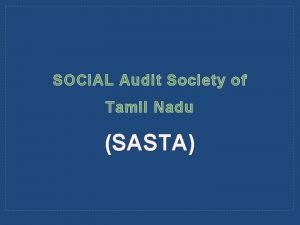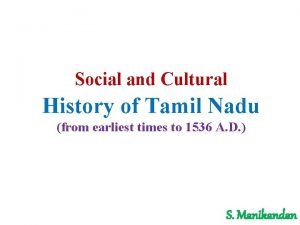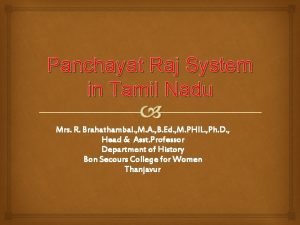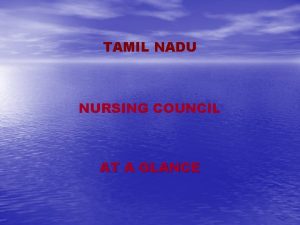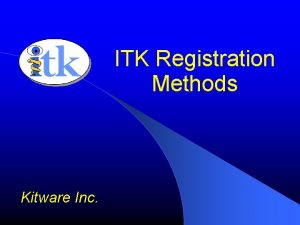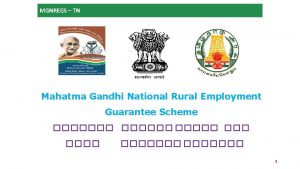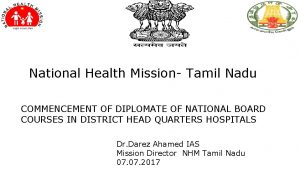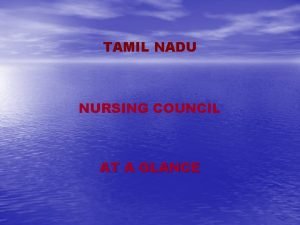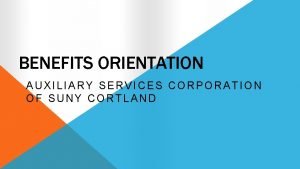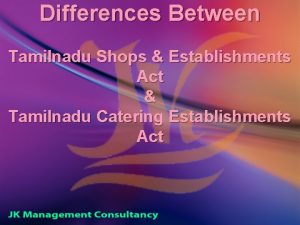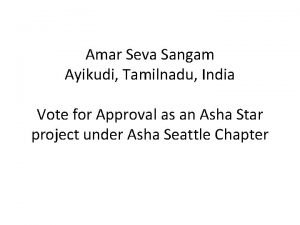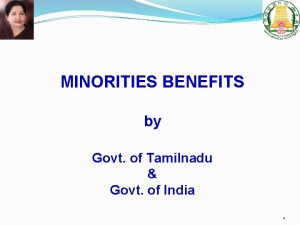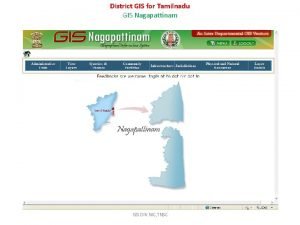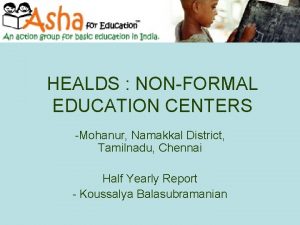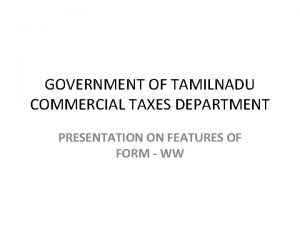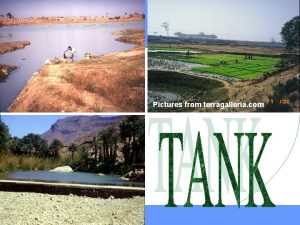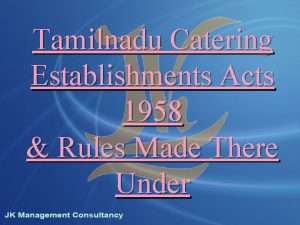Impact of the Tamilnadu Medical Services Corporation on













- Slides: 13

Impact of the Tamilnadu Medical Services Corporation on Drug Prescribing in primary Health Care Murali R, Sathyanarayanan D, Rajkumar C, Senthil Kumar R, Usha T

Introduction § Access to essential drugs is probably the most important element of health care delivery system. § The Government of Tamil Nadu, India realizing this, developed and implemented various strategies under the broad framework of Tamil Nadu Medical Services Corporation to control and monitor drug procurement, storage and distribution to the Public sector hospitals in the state.

Tamilnadu Medical Services Corporation(TNMSC) § 1994: Efforts to rationalize drug use commence and TNMSC formed; Chain of modern warehouses built § 1995: Essential drug list prepared § 1997: News Bulletin “TNMSC Times” launched § 1998: Training for Doctors and Pharmacists.

TNMSC & RUD § EDL § Pharmacist’s handbook § Training of pharmacists in inventory management § “TNMSC Times” § Generic drugs of good quality at competitive rates § Storage in modern warehouses § Distribution based on indenting by medical officers § Inventory control at district warehouses

Objectives Ø To study the current status of essential drug use in the state Ø To study the prescribing behaviour and practices, dispensing practices and the quality of services rendered through primary health centers. Ø To identify weak areas, if any in the rational use of drugs and suggest strengthening measures.

Methodology § 2 primary health centres from each of 22 out of 23 ware house districts were chosen by simple random sampling § An orientation of all medical officers of selected primary health centres was conducted § Out patient chits as booklets with carbon copy were distributed to all selected primary health centres.

§ Only 30 out of the 44 primary health centres returned the chits in time § Exit interviews were conducted by three senior medical officers during the survey. § Each interviewer visited 5 primary health centres(PHC) selected by simple random technique and interviewed minimum 10 patients in each PHC

Prescribing indicators § Average number of drugs per prescription- 2. 92 § % of prescriptions with at -least one antibiotic 54. 42% § % of prescriptions with at -least one injection: 56. 47% § Average cost per prescription- Rs. 3. 75

% of prescriptions as per STG § Acute respiratory infection- 0. 47% § Acute Diarrhea- 3. 63% § Fever- 1. 76% § Hook worm- 12. 60% § Gastritis- 2. 97%

Patient Care indicators § Average consultation time 2. 78 minutes § % of drugs actually dispensed 96. 57% § Average dispensing time- 2. 94 minutes § Average time at the OP ticket counter- 14. 17 minutes § Average time outside the consulting room- 13. 72 minutes.

§ Average time outside the pharmacy- 15. 82 minutes § Average time spent by a patient at the PHC- 47. 75 minutes Health facility indicators § % of availability of Essential drugs at the PHCs- 71. 63% Complimentary indicators § % of drug cost spent on injections- 24. 96%

Summary NO. INDICATOR STATE IDEAL 1. Avg. Drug per prescription 2. 92 2 2. % Of prescriptions with injection 56. 47 <10% 3. % Of prescriptions with antibiotic 54. 42 <25% 4. No of drugs actually dispensed 96. 57 100 5. % Of prescription counselling by doctor 28. 05 100 6. % Of prescription counselling by doctor 63. 37 100 7. Availability of drugs 71. 63 100

Conclusion and recommendations § TNMSC has § Develop ensured simplified availability and STGs that accessibility of are adapted drugs to local conditions § Rational use of § Improve training drugs is still a problem § Periodic in. Tamilnadu monitoring & evaluation
 Time bound promotion for doctors in tamilnadu
Time bound promotion for doctors in tamilnadu Social audit meaning in tamil
Social audit meaning in tamil Archaeological sources
Archaeological sources Balwant rai mehta committee
Balwant rai mehta committee Tamilnadunursingcouncil
Tamilnadunursingcouncil Itk image registration
Itk image registration Acabc training centres in tamilnadu
Acabc training centres in tamilnadu Mgnrega first signatory
Mgnrega first signatory Nhm tamilnadu
Nhm tamilnadu Introduction of tamil nadu
Introduction of tamil nadu Auxiliary services corporation of suny cortland
Auxiliary services corporation of suny cortland Hình ảnh bộ gõ cơ thể búng tay
Hình ảnh bộ gõ cơ thể búng tay Slidetodoc
Slidetodoc Bổ thể
Bổ thể

